Processing your own meat is one of the most rewarding parts of hunting. Sure, it saves you money, but more than that, it gives you peace of mind knowing you’re getting your own deer back and that only your hands have touched the meat. I also like having control over how everything’s portioned and packaged, so when it’s time to cook, I’ve got options. One area that’s really worth learning is the hindquarter. It contains the bulk of the meat on an animal and offers a variety of versatile cuts. Here’s a detailed guide to the subprimal muscles, and the best ways to cook each one.
Before we look at each muscle, let’s take care of the outer surface. After field dressing, it might be dry from hanging, which leaves a bit of a dry rind. It might also have a little hair or debris. Instead of washing it, I find it easiest (and frankly more sanitary) to wipe it down with a paper towel and then trim a thin outer layer that may have dried tissue, waxy fat, dirty silverskin, or the rind using a sharp boning knife. Cleaning up the outside will also make it much easier to see the natural seams between muscle groups during the next step.
Seam Butcher
Once the hindquarter is cleaned, begin separating the major muscle groups shown in the image below by following the natural seams. These seams are made up of connective tissue and act like roadmaps. You can use your hands to naturally pull most of it apart to preserve the quality and structure of each cut without hacking through the meat. At this point, you just want to separate the muscles so you know what you’re working with.
After the muscles are separated, you’ll be able to identify seven main cuts: top sirloin, tri-tip, sirloin tip, bottom round, top round, eye of round, and shank. Each cut has different characteristics and cooking applications. Let’s go through each.
Top Sirloin or Rump Roast
This is the muscle at the top of the hindquarter that connects to the hips. When quartering, it can be easy to accidentally leave a chunk of it on the carcass if you’re not careful, especially if you disconnect the femur from the inside of the leg instead of following it up and over to the hip.
This flat, square-ish-shaped muscle isn’t quite as tender as other cuts, and it does have a lot of connective tissue woven through it. I’ve had this prepared as a steak after being aged for several weeks, and it was delicious, but most of the time I use it for stew meat or grind it into burger or sausage.
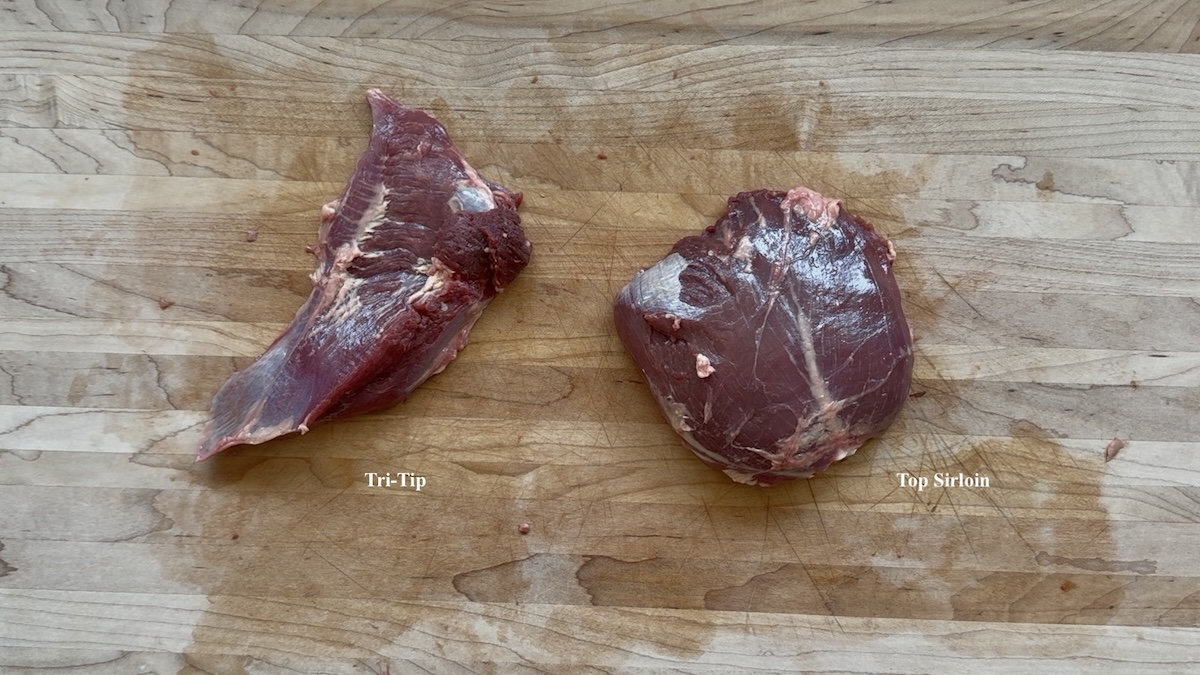
Tri-Tip
If you’re not familiar with the tri-tip, then you may have heard of the Santa Maria roast – a popular style of grilling. It’s the little triangular piece of meat that sits on top of the sirloin tip. It has a thin (but very strong) layer of silverskin that wraps around the outside. On larger-bodied animals, you can trim this off, marinate, and grill it for a phenomenal steak. You can do the same on smaller animals, like antelope or does, but you won’t be left with much meat after. In these cases, you can save yourself the extra effort and add this to the grind pile or make stew.
Sirloin Tip (aka Knuckle)
The sirloin tip is the big football muscle located in what would be considered the quadriceps of the leg. It’s technically comprised of three different muscles joined into one, and it wraps around the femur. After removing this muscle from the bone, I trim the silverskin only on the outside top surface and leave the silverskin running through the center.
I like to cut the sirloin tip into thick steaks. It’s also an amazing roast to slow-cook in the oven at a low temperature for a rosy red, prime rib-like dish with au jus.
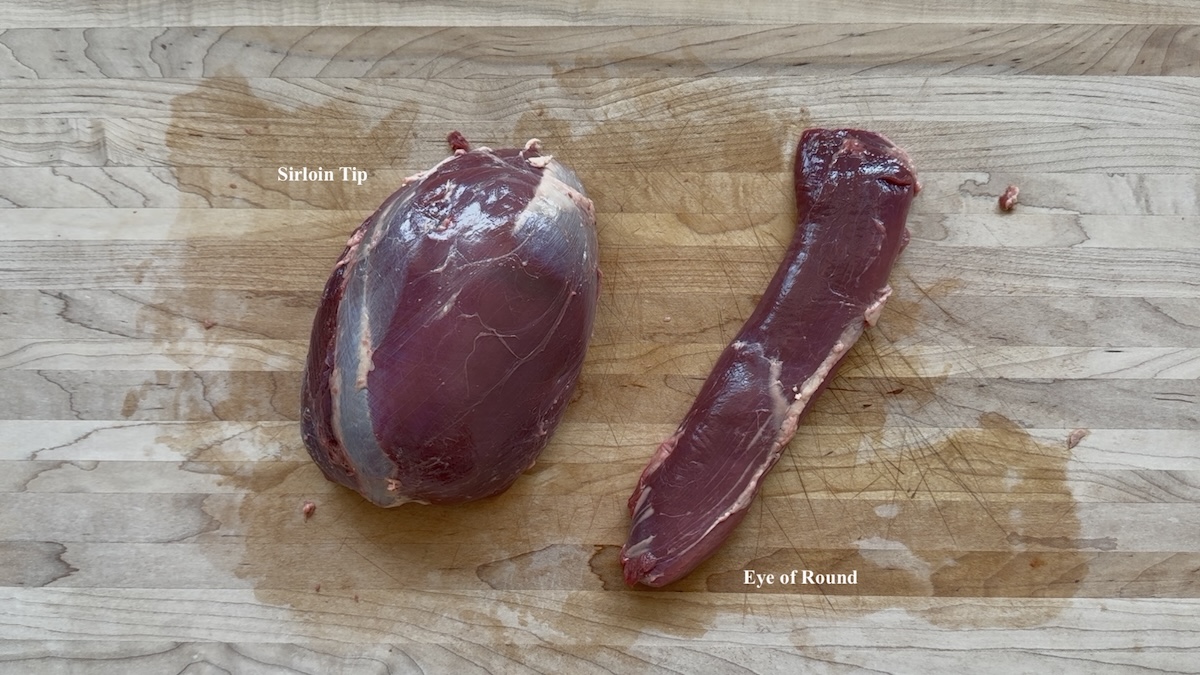
Eye of Round
This hidden gem is a cylindrical muscle tucked towards the bottom of the hindquarter. Although it looks like a tenderloin, it’s not quite as tender, but with the right preparation, it can be excellent. An older deer or a buck might yield a tougher piece of meat and is better suited to making stew or grinding. A younger deer or a doe is great pan-roasted or reverse-seared. Because this muscle is free from any connective tissue running through the center, it’s a great candidate for jerky.
Bottom or Outside Round
This is the largest muscle on the hindquarter and the least tender aside from the shank. There is a thick band of silverskin that runs along one side that needs to be trimmed, as well as the thin layer that encases the whole muscle. Once removed, you’re left with the “flat” (the long rectangular piece) and a small triangular piece on the side.
If you have the knife skills (and time) you can cut the flat against the grain (crosswise) at a 45-degree angle into thin strips. These can then be pounded out into thin cutlets for chicken-fried steak or stir-fry.
Alternatively, you can also reverse this muscle for stew meat, sausage, or plain ground meat with 20% fat added. If you’re unsure of what you want to do with it at the time of processing, you can always leave it whole and decide later.
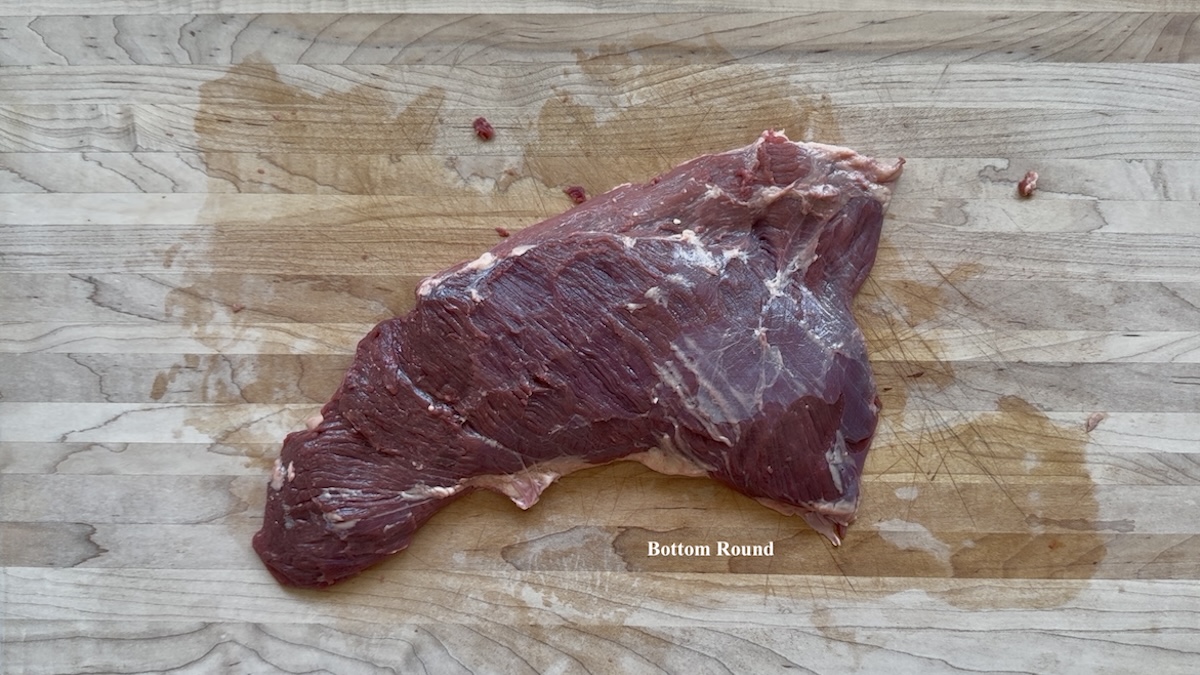
Top or Inside Round
The top round is a rectangular-shaped muscle found on the inside of the hindquarter. This is easily my favorite cut of meat on a big game animal. It is a thick, tender muscle with a long grain line. You can cut it into steaks or cook it whole as a roast. If you decide on the latter, don’t treat it like a pot roast! Use low heat on the oven or smoker and pull it at 130°F for medium-rare.
While the top round is the main subprimal, it’s worth noting two other pieces of meat: the cap and pectineus. When trimming the outer rind or silverskin, you may have come across a thin flap of muscle and fat on the inside of the leg covering the top round.
This is called the gracilis cap. A beef gracilis cap could be up to 4 pounds and is best cooked similarly to a skirt steak. If you have an elk or moose, this is worth saving, but there’s not much to work with on smaller hooved species like a whitetail doe or pronghorn.
Attached to the side of the main subprimal round muscle is the pectineus, the small, cone-shaped muscle. I like to separate it because its odd shape makes for uneven cooking. This muscle is very tender, and you can cut it up into rounds for small steaks, cube it for kebabs, or save for tartare.
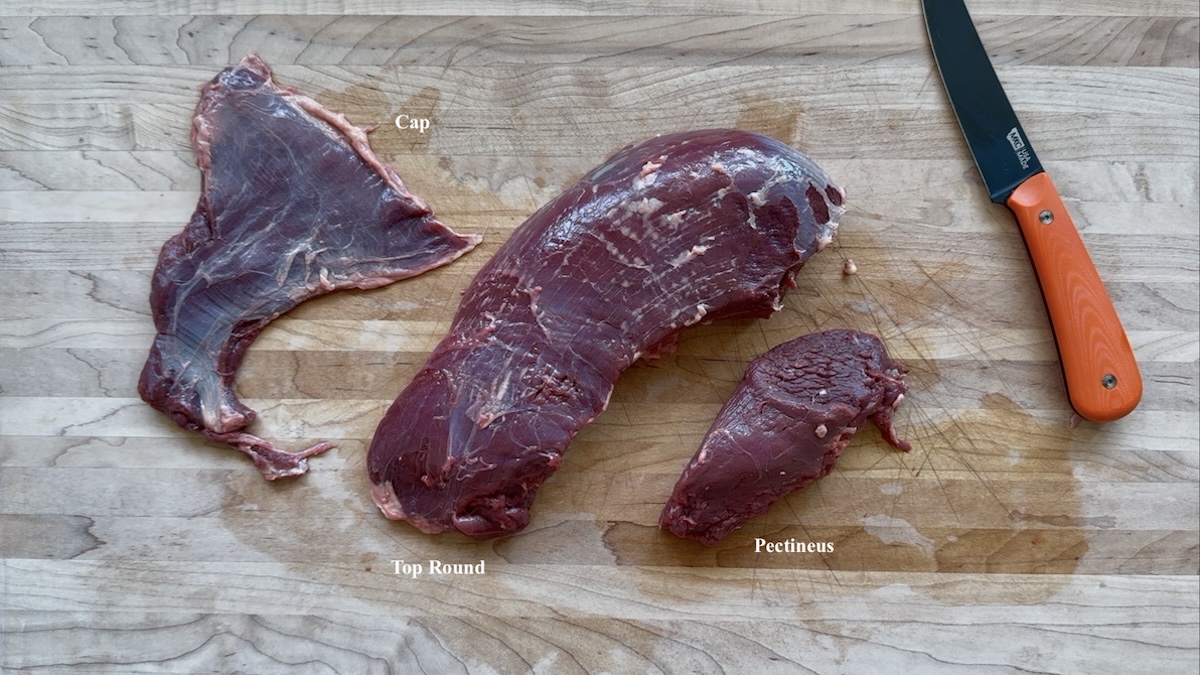
Shank
Last but certainly not least, we have the shank. This is the calf of the animal, and because this muscle works extensively, it is very tough! However, all that silverskin is made up of collagen which turns to gelatin when slowly cooked, adding succulence to any dish. The shank is best prepared by cutting it crosswise into 1-2” pieces for osso buco, or keeping them whole and slowly braising in the oven until the meat falls apart.
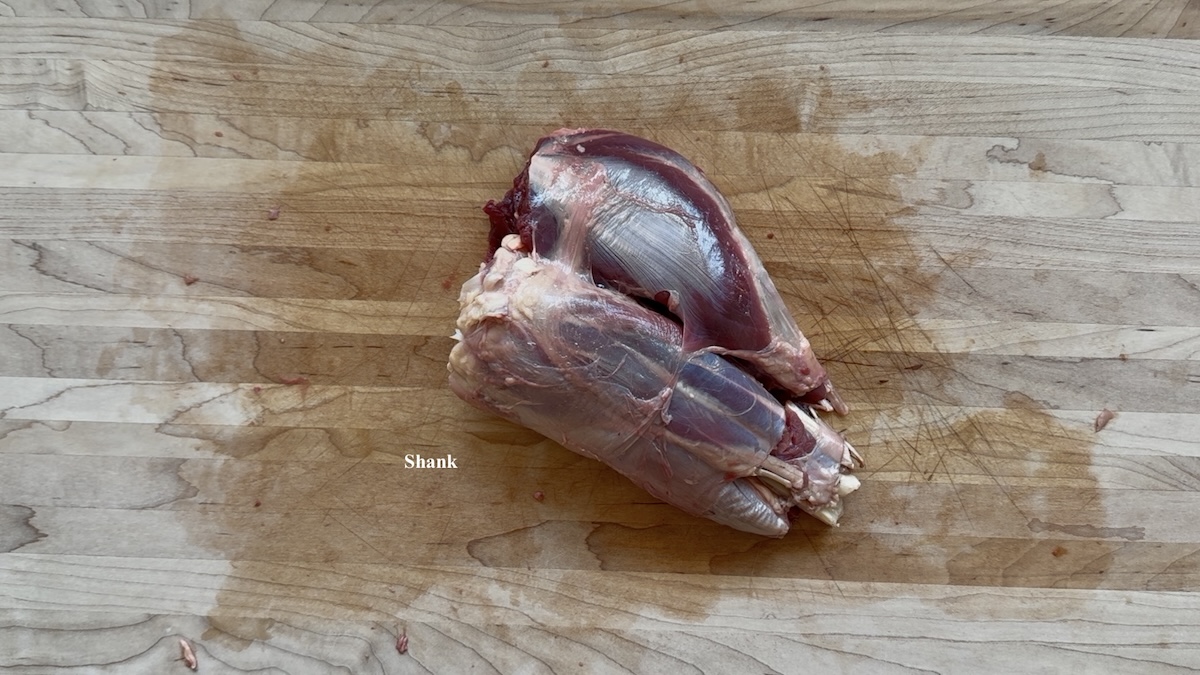
What About That “Gland”?
You might have heard there’s a hidden gland inside the hindquarter that, if punctured, will ruin and taint your meat! This is actually a lymph node, and unlike the gallbladder of a bird, puncturing it will not squirt disgusting fluid all over your meat.
This lymph node is found inside a pocket of fat, sandwiched between the top round and the bottom round. Lymph nodes do filter toxins and waste from the body, so I don’t advise eating it. If you do accidentally cut through it, you can just wipe your blade clean and carry on with your processing.
Lymph nodes are also used for chronic wasting disease (CWD) sampling because the prions tend to concentrate there as well as in the brainstem. So, if you take the time to safely remove it, and live in an area where CWD is prevalent, check in with your state game agency to see how you can submit the node for testing.
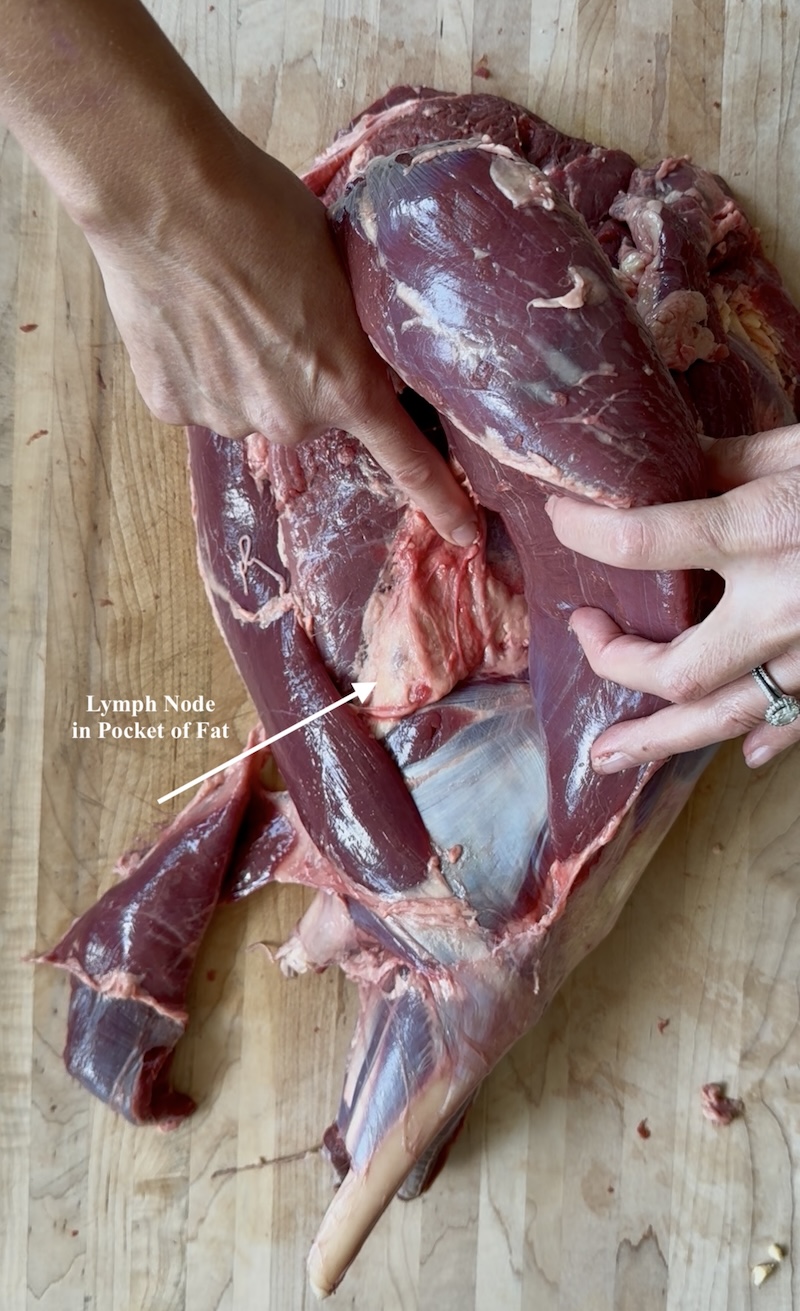
Storage
When it comes to freezing and storing your cuts, vacuum sealing is the best way to prevent freezer burn and preserve flavor. Be sure to label every package with the cut and date, and consider portioning the meat based on how you typically cook. For example, if you usually prepare one-pound meals, avoid freezing a whole four-pound roast. If you’re slicing steaks, it’s helpful to freeze them individually or in small stacks with parchment paper between each piece.
Learning to break down a venison hindquarter at home is a skill that pays off season after season. Not only does it give you high-quality cuts tailored to your cooking needs, but it also deepens your connection to the animal and the process. With a little practice and the right technique, you’ll be turning whole hindquarters into beautifully packaged, meal-ready cuts with confidence.
Read the full article here

